We hope that you will greatly enjoy and appreciate this article we present to you here, dealing with these 4 Breathtaking Bays and Inlets. It was certainly our great pleasure to compile it for your enjoyment, and hopefully, your edification on their wonders.
Obviously, these 4 Breathtaking Bays and Inlets represent only a tiny percentage of such mavels found throughout the world. But, it’s our belief that the locations included here serve as excellent representative samples. So, sit back, and let the wonders unfold before you!
Bay of Islands
Bay of Islands Facts
- Leading off this article about our choices of 4 Breathtaking Bays and Islands comes the magnificent location appropriately known a the Bay of Islands.
- Perhaps most notably, the aptly-named marvel easily constitutes one of the most beautiful geological marvels of its entire region of the world. This statement, an opinion shared by many individuals, occurs for a very specific and truly astounding reason.
- That’s because the sheer variety and scope of natural beauty found here easily ranks it as one of the most remarkable places on Earth. This principle extends to the natural geography of the location, in addition to the great biological beauty found there.
- That holds true due to one amazing fact. This one bay holds a phenomenal total of 144 separate and distinct islands within its boundaries. Due to the shape of the individual islands, many of them, amazingly, also possess their own peninsulas and inlets.
- The site has a long history of use. This holds true because the Maori originally colonized the islands in the bay roughly 700 years ago. The principal tribes involved in the colonization of the Bay of Islands consisted of the Ngapuhi iwi and the Ngati Miru.
- The discovery of the breathtaking Bay of Islands, by outsiders, though, occurred much later in history. In point of fact, the first known European to see the bay happened to be the famous James Cook. This fortuitous discovery occurred in the year 1769.
- This magnificent location also quickly garnered the interest of those looking to expand. It therefore represented the first site in the region to be settled by Europeans. Whalers arrived at the end of the 18th century, followed quickly by missionaries in 1814.
Bay of Islands Physical Description
The stunning site appropriately known as the Bay of Islands consists of an irregular-shaped drowned valley system that also just happens to hold a natural harbor. The are also covers a total area of approximately 100.4 sq mi (260 sq km) and holds a total of 144 islands.
The lovely islands of Kerikeri, Te Puna, and Waikare Inlet comprise the three largest islands in the bay. The breathtaking region also includes a vast number of smaller bodies and other formations. These include a number of naturally formed inlets and peninsulas.
The waters of the beautiful bay also hold yet another distinction. That’s because these rank as the second bluest in the world, according to many. The grandeur of the Bay of Islands, however, does not simply end there. Nature, it seems, had still more plans for the site.
This holds true due to the amazing fact that many of the islands also contain beaches formed of golden colored sand and an abundance of lush vegetation. The waters of the magnficent region additionally contain vast quantities of numerous species of marine life.
The beautiful bay is separated from the Pacific Ocean by the Purerua Peninsula and Cape Brett. The Purerua Peninsula also shields the northwestern section of the bay. Cape Brett shields the eastern side. This cape itself further extends 6.2 mi (10 km) into the ocean.
Bay of Islands Location, History, and Ecology
It bears mentioning that the magnificent feature known as the Bay of Islands formed in an area of the world already highly renowned for its breathtaking regions of natural beauty. That’s because it lies in what now represents the island country of New Zealand.
This most likely comes as no surprise to those familiar with the already incredible natural beauty for which this part of the world remains renowned. Subsequent to its discovery by European explorers, numerous whalers and missionaries poured into the region.
This influx of non-indigenous people began around the year 1814, and rapidly grew to a flow of significant proportions. The region eventually became the site of the first permanent European settlement in the country. This original site bore the name of Russell.
Many original Maori settlements also played key roles in the development of the Bay of Islands, as well as the country. In fact, the community of Okiato became the first capital of New Zealand. This occurred due to the role it played in the early days of the region.
The location remains famous even today for its incredible beauty. Due to this, in fact, it has become a popular tourist destination. Due to enormous publicity provided in the 1930’s by author Zane Grey, the region also became quite famous for its big-game fishing.
However, the amazing region of the globe also serves as a popular destination for sailing enthusiasts and numerous other tourist activities. In more recent times, its great natural beauty has been featured in a number of major movies, serving as a stunning backdrop.
Ha Long Bay
Ha Long Bay Facts
- The second location featured in this compendium of 4 Breathtaking Bays and Inlets is the mind-blowing site known as Ha Long Bay.
- Without question in the minds of those who know if it, the world renowned site with the descriptive name forms an incredibly beautiful and picturesque location. This marvel of Nature further formed in an area already known for its great natural beauty.
- That’s because this wonder formed in what now constitutes the Quang Ninh Province, of Vietnam, in Asia. Completely understandably, furthermore, its majestic beauty garnered it countless awards and appreciation from people around the world.
- In fact, UNESCO also designated this astonishing marvel of Nature as a World Heritage Site in 1994. Its nature also makes it one of the most frequently visited works of Nature in its region of the world. That, though, makes it vulnerable in some ways.
- As is often the case, however, all this beauty did not just appear overnight. Fabulous Ha Long Bay formed slowly over a period of many millions of years. This incredible formation also occurred due to a very specific combination of several natural processes.
- These impressive processes included geological activity and erosion, including both wind and water. The magnificent site also remains renowned for its array of columns, karsts, and islets. Most of these primarily formed from soft local limestone.
Ha Long Bay Geology
Magnificent Ha Long Bay also boasts some very impressive measurements, in addition to its breathtaking beauty and undeniable charm. For one, the location actually covers quite a bit of area. In fact, the site includes an area measuring roughly 600 sq mi (1,553 sq km).
This already impressive statistic also includes a breathtaking coastline totaling about 74.5 mi (120 km) in length. Within the confines of the bay also stands yet more wonders to be appreciated. These marvels further include approximately 2,000 small islands and karsts.
The majority of these incredible formations, not surprisingly, mainly consist of limestone. The greatest percentage of these also appear as monolithic in shape. Incredibly, though, several of the larger karsts and islands of Ha Long Bay also formed as essentially hollow.
Yet the mind-boggling wonders do not stop there. Many of these also contain extensive caves! Two of the islets have enough area to support small, permanent populations. Many of the smaller islands also possess comparatively large beaches along their perimeters.
Ha Long Bay Climate and Endemic Species
With seemingly no end of the marvels in sight, the wonders of stunning Ha Long Bay even extend to its climate. For the most part, this aspect of the location remains considered distinctly tropical. This further comes with the presence of only two distinct seasons.
Summer remains moist and hot, while winter grows rather cold. Annual rainfall amounts additionally average around 78 in (2 m) in total. Further adding to the splendor of this tiny and remote part of the world, most of the karsts have a covering of thick vegetation.
The great majority of the islets within the confines of the magnificent bay also boast extensive quantities of vegetation. A total of 14 recognized endemic species of flora also live across the islets and karsts of Ha Long Bay. This makes it of supreme ecological importance.
Understandably, wildlife continues to be abundant within the region. In fact, officials count a total of 60 known species of endemic fauna residing within the confines of the bay. Much of the highly unique ecology of the bay now qualifies as threatened by increasing tourism.
Milford Sound
Milford Sound Facts
- Placing in the third postion in this article about 4 Breathtaking Bays and Inlets, the dazzling Milford Sound does so only due to random selection.
- The breathtaking natural formation represents an absolutely stunning natural fjord. Due to its great beauty, in fact, it holds a special status. That’s because the locations ranks as the number one travel destination in the world, according to many sources.
- The mind-blowing beauty of the site has also previously received accolades from other respected sources, and rightfully so. This holds true due to the fact that the highly respected writer Rudyard Kipling himself once positively referred to it.
- He called this astonishing location the eighth wonder of the world. Many people, even today, find themselves in complete agreement with his estimation. The marvels of the location never fail to dazzle and amaze visitors with their awesome beauty.
- The dazzling Milford Sound also boasts amazing features. This fact only serves to add to its appeal. This holds true because, in addition to its own rather remarkable beauty, the site also serves as home to an astonishing variety of wildlife, including right whales.
- The magnificent location also stands out from other geographical wonders for a weather-related fact. This occurs because the area routinely receives copious amounts of rainfall. In fact, it ranks as one of the wettest permanently inhabited regions on earth.
Milford Sound Physical Description
The amazingly gorgeous Milford Sound deserves its fame for its beauty for a wide variety of reasons. For one thing, its walls extend a length of roughly 9.3 mi (15 km). This stunning marvel of Nature also remains bordered by enormous and comparatively sheer rock walls.
In some places along the length of the picturesque fjord, these walls further rise to a height of as much as 3,900 ft (1,200 m). Several equally majestic individual peaks also line its length. Two of these much more massive features exceed 4,200 ft (1,280 m) in height.
In addition to such splendor, the magnificent location also boasts numerous other natural geological wonders for visitors to behold. These extra features even include two magnificent permanent waterfalls, bearing the names of Lady Bowen Falls and Stirling Falls.
After particularly heavy rains, furthermore, numerous other, though temporary, waterfalls also frequently cascade over the steep rocky slopes. In another marvelous action, water-drenched moss feeds these, and these usually last only a few days, once the rain stops.
At its entrance, the marvel of Nature known as Milford Sound additionally connects to the Tasman Sea. This joining occurs at a location known simply as Dale Point. This particular location, itself quite awesome to behold, represents the mouth of the beautiful fjord.
Milford Sound Location, Climate, and Wildlife
Perhaps most notably, the fabulous and world-renowned Milford Sound lies in an area already renowned for its splendor. the southwest portion of New Zealand’s South Island, near Australia. More specifically, the formation sits within Fiordland National Park.
The breathtaking natural wonder also forms part of what’s now the Piopiotahi Marine Reserve, and the Te Wahipounamu World Heritage Site. The names of the two protected areas, also quite appropriately, derive from the language of the native Maori.
Understandably, Milford Sound also constitutes the wettest part of the country of New Zealand. This occurs because the region receives an average annual rainfall of about 252 in (6,412 mm). Rainfall totals of as much as 10 in (25 cm) in a single day sometimes occur.
Finally, such a region quite naturally serves as host to numerous species of both flora and fauna. Some of the wide varieties of fauna include several species of seals and bottlenose dolphins. Others, meanwhile, also include several species each of whales and penguins.
Shark Bay
Shark Bay Facts
- last, but certainly not least, among our choices for inclusion in this compilation of 4 Breathtaking Bays and Inlets comes the appropriately-named Shark Bay.
- Most notably, the amazing location commonly known by many by the distinctive name stands out from similar areas for several reasons. That statement holds true due to the fact that the site remains famous for a total of three separate factors.
- These different factors further consist of not only the geology of the site itself, but its fabulous flora and fauna, as well. Native aborigines apparently, and not surprisingly, however, knew of the astounding site long before the arrival of European explorers.
- Signs also indicate that they knew of the location, and made use of it, beginning long ago. Evidence indicates this goes as far back as 22,000 years ago. Currently, however, fewer than 1,000 known individuals reside with the beautiful region.
- In recognition of its amazing characteristics, the awesome Shark Bay now holds the respected status of a World Heritage Site. It received this recognition in the year 1991. This recogition also provides it with at least a certain measure of protection.
- The fabulous site itself also contains within it a number of protected areas and preserves. Roughly 70% of the area of the site also includes the local marine waters. Here, many species find a relatively safe haven in which to live and flourish.
Shark Bay Physical Description
The magnificent Shark Bay covers a respectable area. That’s because it covers an area of roughly 3,200,000 acres (1,3000,000 ha). The fantastic site also has an average depth measuring about 30 ft (9 m). It remains further divided by multiple shallow banks.
Its boundaries also contain numerous small islands and peninsulas. Many limestone cliffs also overlook the bay. Given its location, this stunning bay understandably has an extremely hot, dry climate. This, quite naturally, led to the development of a unique environment.
The water of the bay measures about twice as salty as the surrounding ocean. It therefore represents the ideal environment for quantities of seagrass to develop. Roughly 10,000 years ago cyanobacteria started building up stromatolites in the southern section of Shark Bay.
This section of the bay, commonly known as Hamelin Pool, further holds the most abundant and diverse collection of stromatolites on Earth. Finally, evidence suggests that these stromatolites may have also evolved a form of chlorophyll unlike anything else on earth.
Shark Bay Location, Flora, and Fauna
Unsurprisingly to those familiar with the region, Shark Bay formed in a region of the world well known for its natural beauty. That holds true because the wonder of Nature formed roughly 500 mi (800 km) north of what now forms the site of the city of Perth, Australia.
Its location and nature additionally serve to make it an area of extreme zoological importance to the world. The climate and prevalence of seagrass make it a primary breeding and feeding ground for many species. This alone makes it a region of vital importance.
Nearly 10,000 dugongs call the Bay home. This equals roughly 13% of all dugongs on the planet! More than 230 known species of birds also live in the beautiful bay. More than 150 recognized separate types of reptiles also reside within the confines of Shark Bay.
The wonders of this breathtaking region do not simply stop there, though. That’s because an impressive known total of 26 types of mammals also make their home there. In an even more astonishing turn of events, all of these rank as threatened species.
Sediment and fragments of discarded shells also gradually built up in beds over time. This inexorable action actually succeeded in raising the floor of the bay, causing it to be as shallow as it is. Several hundred types of fish live in the waters of the bay, as well.
That led to a further enhancement of the awesomeness of this location. The fish draw huge numbers of rays and sharks, hence the name of the bay. The magnificent Shark Bay also serves as the single largest nesting site for two species of endangered sea turtle.
Impressively, two species of whales even use the bay as a gathering spot, during their migrations. All of these factors, and countless others, serve to make the location the true marvel of Nature that it is. It’s also why it needs our concerted efforts to preserve it.
4 Breathtaking Bays and Inlets
We sincerely hope that you have all thoroughly enjoyed reading this article about these 4 Breathtaking Bays and Inlets. It’s also our fervent hope that doings so has left you with a thirst to learn of more examples of the stunning geological beauty of our world.
Unfortunately, however, many of these natural marvels now find themselves imperiled. For some, to be sure, that’s due to the natural processes of time. For others, though, it’d due to the depredations of man. Regardless of the cause, though, each deserves or protection.
Check out our other articles on Earth’s Countless Amazing Amphibians, 4 Magnificent Malaysian Insects, The Mighty Tornado, 5 Obscure United States Geological Gems
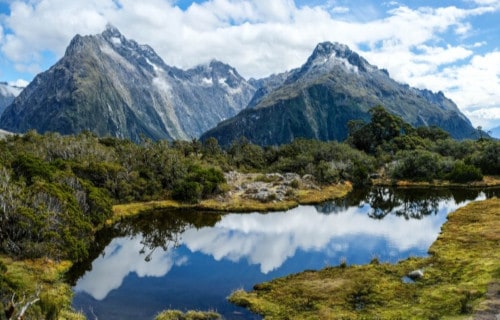
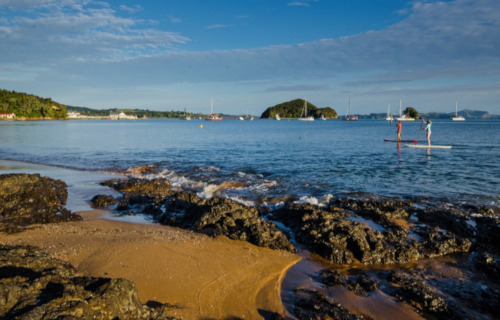
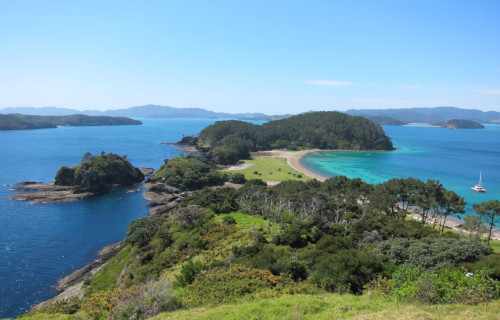
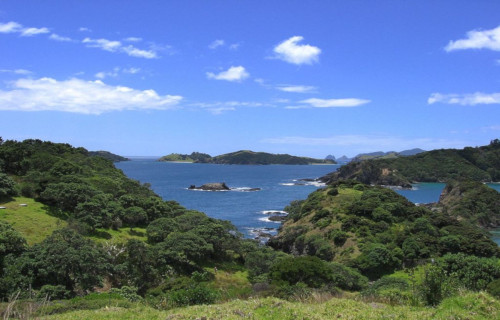
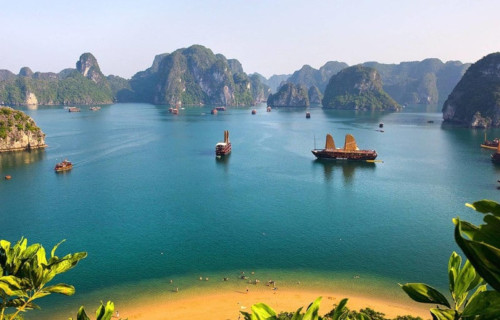
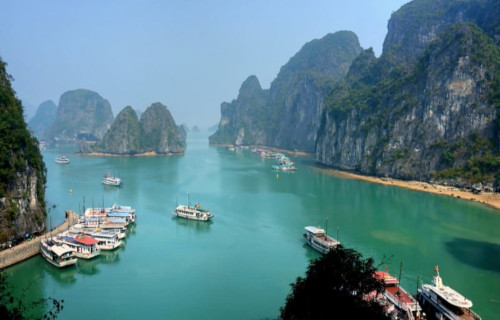
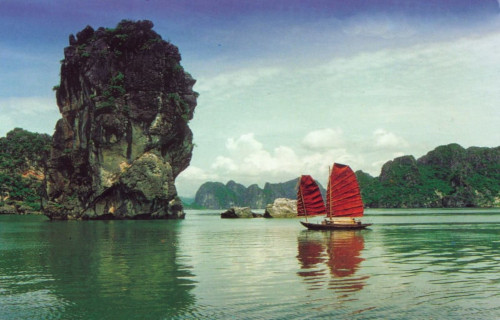
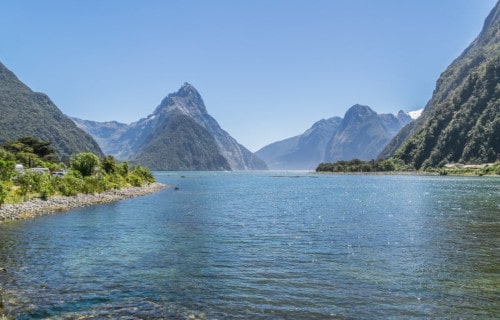
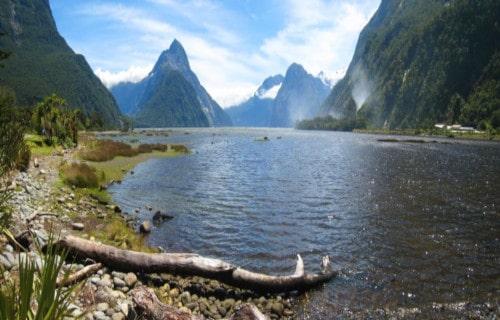
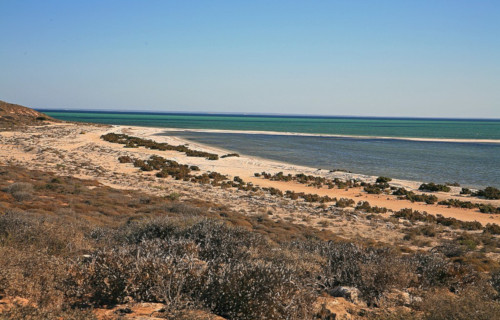
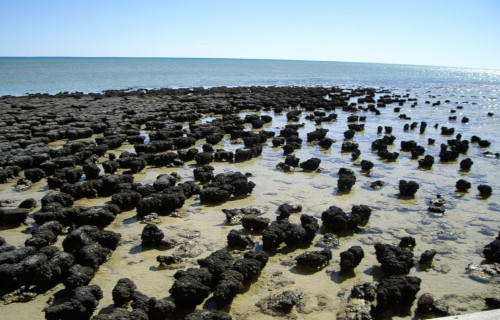
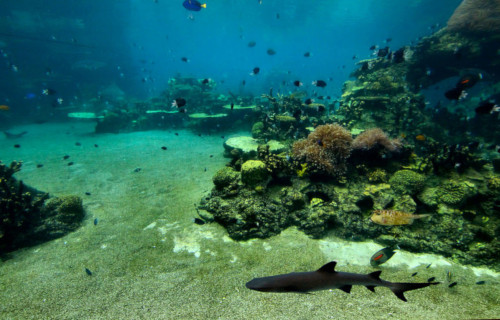









Leave a Reply